Tips for Exploring Iran and Damavand
Travel Advice for Exploring Iran's Attractions and Trekking Mount Damavand
Iran offers a rich tapestry of history, culture, and natural beauty to explore. By following these tourism tips, advice, and recommendations, you can ensure a memorable and respectful journey through this enchanting country and trekking tour to Mount Damavand. Embrace the warmth and hospitality of the Iranian people, savor the delicious cuisine, and immerse yourself in the breathtaking landscapes and historical treasures that await you in Iran. Your adventure in this ancient land promises to be an experience of a lifetime.
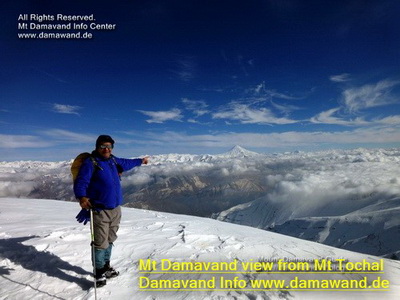
Climbing Damavand Mountain, Iran
winter view from Mt Tochal Peak
Photo Damavand Info
Travel Advice for Exploring Iran's and Damavand
Here are some important tips for traveling to Iran and trekking Mount Damavand.-
Iran's Currency: In Iran, they use the Rial as their official currency, but most people prefer using Tomans. 10 Rials equal 1 Toman. To understand the money, just ignore the last four numbers on the right side of the figures.
-
Holidays in Iran: Be aware of Iranian holidays, especially during the New Year. Many shops and tourist places like museums might be closed during these times. Also, there can be heavy traffic on the main roads. The weekend in Iran is on Thursday and Friday, with Friday being the main day off.
-
Safety on Mount Damavand: Safety is crucial when planning a climbing tour to Damavand. Some tour organizers may offer low prices, but be cautious as the quality of their services might not be up to par.
-
Language in Iran: Iranians speak Farsi (Persian), but you can usually communicate in English. It's a good idea to learn some basic Farsi phrases, and you'll likely find someone who speaks enough English to help you or give you directions. In major cities like Isfahan and Shiraz, you'll also find street signs in English.
-
Food and Drink: Don't worry about trying local food; it's delicious and healthy. You can easily find good restaurants while traveling, especially where truck drivers stop. Bottled water is readily available and inexpensive. Coffee might be a bit harder to find in restaurants, but Nescafe 3-in-1 is a common alternative.
-
Important Notes for Damavand Mountain: Due to sanctions and restrictions, some financial aspects are different in Iran. You can't use ATMs or credit cards for most transactions. Bring enough cash with you. You can exchange US dollars or Euros at airports and in most cities.
-
Internet Access: Internet cafes are common in Iranian cities, but some websites and social media might be restricted. The café staff can often help you access them.
-
Dress Code: Women should wear a lightweight scarf and a manteau or a long top with pants. Open shoes, sandals, and some makeup are okay. For men, t-shirts with short sleeves and long pants are appropriate. Avoid wearing shorts.
-
Camera and Electronics: You can easily find digital cameras, SD cards, and batteries at affordable prices in Iran.
-
Healthcare: Pharmacies are widely available, and medications are usually affordable if you happen to get sick during your trip.
Remember these tips to have a smooth and enjoyable adventure in Iran!
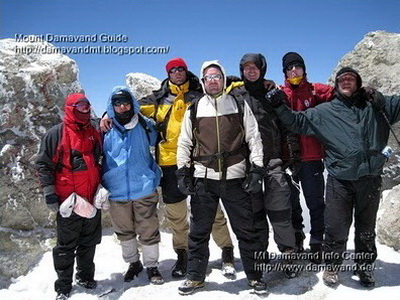
Damavand Tour
Damavand Trekking Tour
Travel Advice for Exploring Iran's Attractions and Trekking Mount Damavand
Iran, a land of ancient civilizations, stunning landscapes, and warm hospitality, offers a unique and enriching travel experience. From the historic city of Isfahan to the bustling bazaars of Tehran, Iran is a country filled with wonders waiting to be explored. To make your journey through Iran as enjoyable and smooth as possible, we've compiled a comprehensive guide of tourism tips, advice, and recommendations. Whether you're a seasoned traveler or embarking on your first international adventure, this guide will help you make the most of your visit to this beautiful country.
- Iran Visa and Travel Documents
Before you set foot in Iran, it's essential to ensure your travel documents are in order. Most travelers need a visa to enter Iran, which can be obtained through the Iranian consulate in your home country or via the Visa on Arrival (VOA) system at major international airports. However, it's crucial to check the latest visa requirements and regulations as they may change from time to time.
To apply for a visa, you'll typically need the following:
- A valid passport with at least six months' validity beyond your intended departure date.
- A completed visa application form.
- Passport-sized photos.
- Proof of travel insurance.
Visa processing times can vary, so it's a good idea to apply well in advance of your trip.
- Best Time to Visit
Iran's diverse climate means that the best time to visit depends on your destination and what you want to experience. Generally, the best times to visit are during spring (March to May) and autumn (September to November) when the weather is pleasant and ideal for exploring cities and natural attractions.
- Spring: The blooming flowers and mild temperatures make this season perfect for visiting places like Isfahan and Shiraz.
- Autumn: Enjoy comfortable weather for hiking in the Zagros Mountains or exploring Tehran's cultural treasures.
- Cultural Etiquette
Iran is a country with deep-rooted traditions and customs. To show respect for the local culture and people, consider the following:
- Dress modestly: For both men and women, wearing conservative clothing that covers the legs is essential. Women should also cover their hair with a headscarf.
- Greetings: Iranians are known for their hospitality, and a polite greeting is a must. A simple "Salam" (hello) will go a long way.
- Avoid public displays of affection: Physical contact between unrelated men and women is generally discouraged in public.
- Photography: Always ask for permission before taking photos of people, especially in rural areas.
- Currency and Money Matters
The official currency of Iran is the Iranian Rial (IRR). It's advisable to carry some local currency in cash, as credit and debit cards are not widely accepted, especially in smaller towns. You can exchange money at banks, exchange offices. You can not withdraw cash (USD or Euros) from ATMs.
- Language
The official language of Iran is Persian (Farsi), but you'll find that many Iranians, especially in urban areas, speak at least basic English. Learning a few basic Persian phrases, such as greetings and polite expressions, can enhance your experience and help you connect with locals.
- Transportation
Getting around Iran can be an adventure in itself. The country has an extensive network of buses, trains, and domestic flights, making it relatively easy to travel between cities. However, here are some tips for navigating transportation:
- Domestic flights: Booking flights in advance is advisable, especially during peak travel seasons.
- Trains: Trains are an excellent option for longer journeys, offering more comfort and scenic views.
- Taxis: Use reputable taxi services, and make sure the meter is running or agree on a fare before starting the journey.
- Metro and buses: Public transportation is available in major cities like Tehran, Shiraz, and Isfahan, making it a cost-effective way to explore.
- Food and Dining
Iranian cuisine is a delightful blend of flavors and aromas. Don't miss the opportunity to savor some traditional dishes. Here are some food-related tips:
- Try local specialties like kebabs, stews (such as Ghormeh Sabzi and Fesenjan), and saffron-infused rice dishes (Chelow and Polo).
- Street food: Sampling street food can be a delightful experience, but make sure to choose vendors with good hygiene practices.
- Tap water: Avoid drinking tap water; instead, opt for bottled water.
- Must-Visit Destinations
Iran is teeming with remarkable destinations, each offering its own unique charm and history. Some of the must-visit places include:
- Isfahan: Known for its stunning Islamic architecture and vibrant bazaars.
- Shiraz: The city of poets, gardens, and historical sites like Persepolis.
- Tehran: The capital city with museums, palaces, and a bustling art scene.
- Yazd: An ancient desert city with well-preserved Zoroastrian architecture.
- Safety and Health
Iran is generally a safe country for travelers, with low crime rates. However, it's always wise to take precautions:
- Keep your belongings secure, especially in crowded areas.
- Follow government travel advisories and stay informed about local conditions.
- Ensure you have adequate travel insurance that covers medical emergencies.
Before traveling to Iran, consult your doctor regarding any vaccinations or health precautions you should take.
- Respect Local Customs and Laws
To have a smooth and enjoyable trip, it's crucial to be aware of and respect local laws and customs. Some important points to remember include:
- Alcohol: Alcohol is strictly prohibited in Iran.
- Public behavior: Avoid public displays of affection, and be mindful of local customs and dress codes.
- Photography: Respect restricted areas and avoid taking photos of sensitive military or government installations.
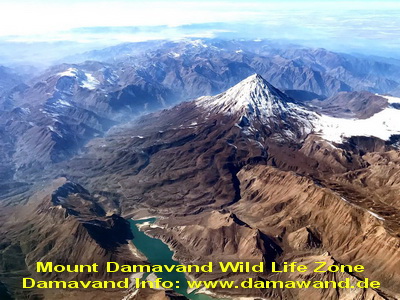
Mount Damavand Iran, Lar National Park, Lar Lake
Damavand unique ecosystem and protected wildlife zone!
Tips for a Memorable Iran Sightseeing Tour and Mount Damavand Trekking Adventure
Trekking Mount Damavand in Iran is a challenging and rewarding adventure that offers breathtaking views and a deep sense of accomplishment. By following these tips, advice, and recommendations, you can prepare yourself for a safe and memorable journey to the summit of this iconic volcano. Remember that every trek is unique, and it's essential to stay flexible, adapt to changing conditions, and prioritize safety above all else. As you stand atop Mount Damavand, you'll not only conquer its summit but also forge lasting memories of an epic adventure in the heart of Iran's stunning wilderness
- Understanding the Challenge
Before embarking on a trek up Mount Damavand, it's crucial to grasp the scale of the challenge ahead. This volcanic peak is not to be underestimated, and trekking to its summit is a physically demanding endeavor. The high altitude, unpredictable weather, and steep terrain make it a strenuous climb that requires proper preparation and a reasonable level of fitness.
- Best Time to Trek
The ideal time to trek Mount Damavand is during the summer months, from late June to early September. During this period, the weather is relatively mild, and the snow has melted, allowing for safer and more manageable hiking conditions. Attempting the climb outside of this window is not recommended due to extreme weather conditions and a higher risk of avalanches.
- Permits and Regulations
Trekking Mount Damavand requires obtaining a trekking permit. These permits are typically issued by the Iranian mountain federation. Additionally, it's advisable to check the latest regulations and requirements, as they can change.
- Guided Tours vs. Independent Trekking
While some experienced trekkers may choose to tackle Mount Damavand independently, opting for a guided tour can significantly enhance your safety and overall experience. Experienced local Damavand guides are familiar with the terrain, weather patterns, and potential hazards, providing invaluable support throughout the journey. They can also assist with obtaining permits, transportation, and accommodations.
- Physical Preparation
Climbing Mount Damavand Iran requires a good level of physical fitness. It's essential to engage in regular cardiovascular and strength training exercises in the months leading up to your trek. Cardiovascular fitness will help you cope with the high altitude, while strength training will prepare your muscles for the uphill climb with a heavy backpack.
Having the right gear and equipment is paramount for a successful and safe Mount Damavand trek. Here's a checklist of essential items:
- Sturdy hiking boots with ankle support.
- Layered clothing to adapt to changing weather conditions.
- A waterproof and windproof jacket and pants.
- A high-quality backpack suitable for trekking.
- Sleeping bag and sleeping mat (if camping).
- Trekking poles for balance and support.
- Sunglasses and sunscreen for UV protection.
- Adequate food and water supplies.
- Headlamp or flashlight with extra batteries.
- First-aid kit.
- Acclimatization
Acclimatization is a crucial aspect of high-altitude trekking. Spend at least a couple of days in the area surrounding Mount Damavand before attempting the summit. This allows your body to adjust to the reduced oxygen levels, reducing the risk of altitude sickness. Base camps like Goosfandsara and Bargah Sevom are suitable for acclimatization and offer accommodation options.
- Hydration and Nutrition
Proper hydration and nutrition are essential during your Mount Damavand trek. Staying well-hydrated helps combat altitude sickness, while consuming enough calories provides the energy needed for the demanding climb. Carry a water purification system to ensure access to clean drinking water, as natural water sources may not always be reliable.
- Weather and Safety
The weather on Mount Damavand can be unpredictable, with sudden changes even in the summer months. Be prepared for cold temperatures, high winds, and potential snowfall, especially at higher altitudes. Monitor weather forecasts and heed any warnings or advisories. If conditions deteriorate, it's safer to turn back and attempt the summit another day.
- Environmental Responsibility
As you embark on your Mount Damavand trek, remember to practice responsible and sustainable tourism. Leave no trace by packing out all your trash and disposing of waste properly. Respect the natural environment and local customs, and do not disturb wildlife or vegetation. Your actions can help preserve the pristine beauty of this remarkable natural wonder for future generations.
Nestled in the heart of Iran's Alborz mountain range stands a majestic giant, Mount Damavand. Towering at 5,671 meters (18,606 feet), it is not only the highest peak in Iran but also the highest volcano in all of Asia. Trekking up Mount Damavand offers a unique and challenging adventure for those who seek to conquer its summit. In this guide, we will provide you with essential tips, advice, and recommendations to make your Mount Damavand trekking tour an unforgettable experience.
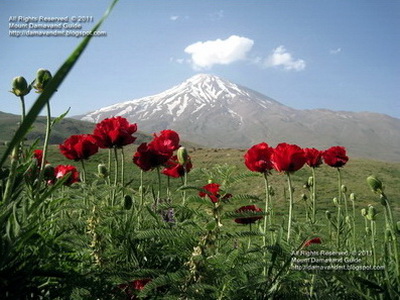
Mount Damavand Poppy Fields
Tips for Exploring Iran and Trekking Mount Damavand
Welcome to Damavand Tourism Tips - your leading Mount Damavand tour organizer for unforgettable adventures in the stunning region of Mount Damavand, Iran!
Join us for a memorable hiking and trekking experience, ski expeditions, and various outdoor activities in Iran. Our professional guides ensure your safety and enjoyment throughout your journey. We also offer cultural and historical tours, making your visit to Iran a well-rounded adventure.
Choose Damavand Tourism Tips for a truly remarkable experience in the Alborz Mountains. We are your adventure tour organizer, ready to lead you on a winter climb, ski mountaineering, or a thrilling snowboard adventure. Let's embark on this extraordinary journey together!
Our Specialized Tours:
- Ski Touring and Snowboard Adventures: Experience the thrill of skiing and snowboarding on the slopes of Damavand.
- Ecosystem, Fauna, and Flora Tours: Explore the rich biodiversity and natural beauty of the area.
- Natural Attractions Tours: Discover the mesmerizing natural wonders of Damavand and its surroundings.
- Damavand Tour Tips: We provide valuable tips and insights for your Damavand adventure.
- Climbing Tricks: Learn the tricks of the trade for a successful ascent.
- Iran Travel Tips: Get advice for your journey to Iran.
- Sightseeing Tour Tips: Make the most of your visit with our sightseeing recommendations.
- Tourism Information: Stay informed about Damavand and its attractions.
- Travel News: Stay updated with the latest travel news.
- Visit Damavand, Iran: Plan your trip to this incredible destination.
- Climbing Tour Info: Everything you need to know about climbing Damavand.
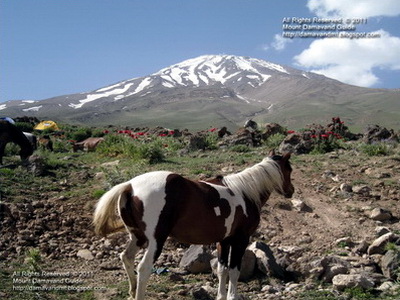
Damavand natural attraction image
Recognized as the top agency for mountain climbing tours in the area, Damavand-Info specializes in providing safe and unforgettable guided treks and ski touring on Mount Damavand. With extensive experience, we tailor each adventure to suit your skill level, whether you’re a skilled climber or a beginner hiker. Our knowledgeable local guides deliver the support and insight needed to conquer Iran’s highest peak. From hiking and trekking to skiing and climbing, we offer a range of experiences to ensure every explorer has a memorable journey.
The Complete Mount Damavand Guide: Facts, Statistics, and a Climber’s Resource
The Complete Mount Damavand Guide is your ultimate resource for exploring this towering peak. With a height of 5,671 meters, Damavand is not only the tallest mountain in Iran but also a popular destination for climbers from around the world. This guide provides in-depth facts and statistics about the mountain’s topography, climate, and geological features, along with practical tips for climbers. From preparing for your climb to understanding the environmental challenges, this comprehensive guide is essential for anyone looking to conquer Damavand.
Damavand Base Camp
Goosfand Sara Campsite, or Damavand Base Camp, is the most straightforward and famous launch site for Mount Damavand treks in Iran. Set at 3,040 meters elevation, it includes a modest mountain refuge, the Saheb al Zaman mosque, and a sheepfold. This base camp is the main gateway for summer treks up the south route, located at 35.9020° N latitude and 52.1094° E longitude.
Certified Local Guides: The Best Damavand Mountain Guide Services. To experience the best of Mount Damavand, nothing compares to the services offered by certified local mountain guides. These experts provide a wealth of knowledge about the mountain’s terrain, weather patterns, and wildlife. The best Damavand mountain guide services are known for their attention to detail, ensuring that climbers are well-prepared and supported throughout their journey. Whether you’re on a high-altitude trek or a ski tour, local guides play a key role in managing safety, logistics, and your overall experience.
Damavand Peak Trekking Tour
Join a Damavand trekking tour for an unforgettable adventure that caters to your skill level. Whether you’re a novice hiker or an experienced mountaineer, these guided tours offer a variety of options to suit your preferences. From multi-day trekking expeditions to shorter day hikes, you can explore the beauty of Mount Damavand with expert local guides who ensure safety and enjoyment every step of the way. Experience the thrill of navigating through stunning landscapes while connecting with fellow adventurers, making your journey through Damavand an enriching and memorable experience that you'll cherish forever.